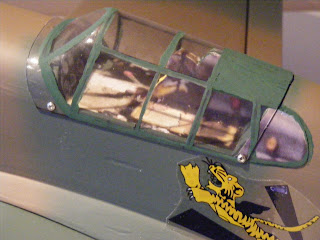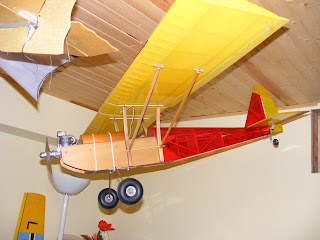Charles Lindbergh's famous Spirit of St. Louis the Ryan NYP.
This RC model of the Spirit was constructed from a Royal kit in the late 1960's and for years was flown on the 21 May the anniversary of that famous flight of 1927, always a handful to fly requiring application of rudder ailerons and elevator for coordinated turns.
Specifications:-
Wing Span...................80 inches
Dry Weight...........................8 pounds
Power.............................ENYA 52 4 C
Charles Lindbergh's final resting place has to be one of the most idyllic locations on this planet. I recently had the good fortune of visiting that site on the Hawaiian Island of Maui; on the wet side not that far from the village of Hana.
Experience the thrill of Lucky Lindy's famous flight:-
To get a feel for what a challenge the original was to fly click the link at the bottom of this page and have a look at this feature presentation.
To get a feel for what a challenge the original was to fly click the link at the bottom of this page and have a look at this feature presentation.
About this feature:-
The creator painstakingly assembled news footage from five different cameras that filmed Lindbergh's takeoff from Roosevelt Field, Long Island and mixed it with enhanced audio from the same newsreel sources.
The creator painstakingly assembled news footage from five different cameras that filmed Lindbergh's takeoff from Roosevelt Field, Long Island and mixed it with enhanced audio from the same newsreel sources.
When you right click on the address, episode #3 comes up ready to play.
You can also click on "Contact" to the left and select #1, then watch them in order, #1 through #4 if you prefer to watch the four segments in their natural order.
What guts Lindbergh must have had to overcome the odds against him and accomplish his amazing feat.
Remember to right click choose "open in new window" and Select "Contact" after each clip to choose the next.
The Flash Player may ask your permission to run; give your permission if you want to view the amazing video clips.
The Flash Player may ask your permission to run; give your permission if you want to view the amazing video clips.
Pretend that it's May 21 1927 all over again, climb into that cramped little cockpit, settle into that wicker chair used as a pilot seat, don't fret by the lack of a front windscreen, you can use the periscope in the instrument panel if you want to see where you are going and prepare to experience for yourself.......
























.JPG)
.JPG)









